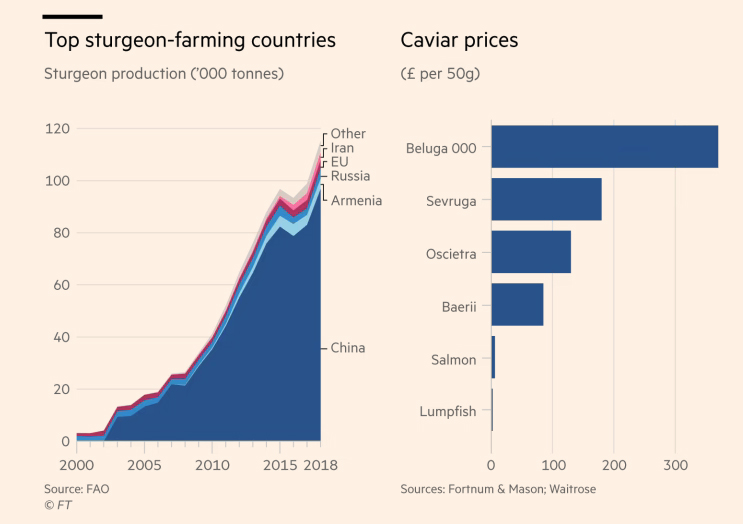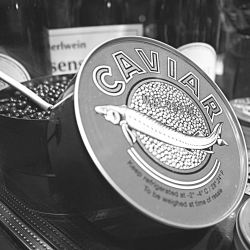Caviar, especially from Beluga sturgeon, is an acquired and expensive taste. With changing geopolitics, would it surprise you that China now produces a third of the global supply? Much of that supply is farm-raised, 500-fold more than wild-caught.
Caviar is the eggs of sturgeon, traditionally obtained by killing the fish and harvesting their ovaries to remove the eggs and their protective coating. That traditional process led to a depletion of wild sturgeon, so the significant increase in sturgeon farming is an ecological plus. China is such a big producer because they use the sturgeon’s eggs and its flesh. Additionally, the collapse of the USSR in the 90s resulted in pollution of the Caspian Sea and poaching of the sturgeon population.

But caviar remains expensive because it takes 16 years to obtain a fully matured sturgeon.
The concerns of individuals about the cruelty of “factory farms” extend to sturgeon. There are several means of no-kill harvesting, including massage to release the eggs, sturgeon cesarian sections, and accelerating ovulation [1].
As the Financial Times reports, a UK biotech firm, Caviar Biotec, is developing lab-based caviar. They are developing three separate products.
- Spherification of the proteins and lipids from sturgeon – “a fake caviar made from real caviar.”
- Growing those proteins and lipids in bioreactors to create a protein powder
- Growing and multiplying sturgeon cells in a bioreactor.
Of course, these cell-based methods also offer the opportunity to closely match the taste profile of wild sturgeon and perhaps increase what are deemed healthy proteins and lipids. For the caviar lovers amongst us, cruelty-free, less expensive, and more healthful caviar is in sight.
[1] This results in the loss of the egg’s protective layer, which must be reconstructed and is felt to alter caviar’s taste.
Source: Caviar/sanctions: lab-grown eggs could spawn an ethical industry Financial Times

